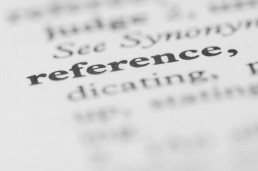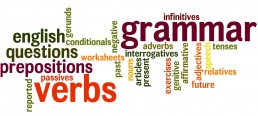Researching An Essay Effectively
One of the best ways to improve your essay writing is to be well prepared. Effective research lays the foundation for a great essay as it informs everything you write and leads to stronger arguments. The more effort you put in at the research stage, the easier your essay will be to write and the better it will be. Here is some guidance on how to approach your research to take your essays to the next level.
Gathering information
Choosing the right sources for your research can be difficult. Several options are available to you, including: websites, books and journal articles. Avoid relying solely on your lecture notes however as, whilst they provide a good starting point, examiners want to see that you have demonstrated strong research skills from diverse sources. Many researchers are rightly suspicious of web-based sources as they could be written by anyone! But not all are created equal and websites can be used to great effect. They can provide the most up-to-date information on current topics and may contain, for example, government reports, maps and statistics. But be sure to carefully scrutinise them.
Consider the credibility of the source, any potential biases and whether the information is verifiable. Books can be immensely useful sources of background information as well as expert views on topics and issues. But be wary. Books are not subject to the same peer-review processes as journal articles and the information may be inaccurate or outdated. Depending on your subject you may want to use them sparingly to maximise the accuracy of your claims, particularly in scientific disciplines. Articles from established scholarly journals are generally the preferred source of reliable information and are especially useful when original research is needed. A key advantage of such articles is the inclusion of comprehensive bibliographies, which allow you to quickly trace primary sources, contradictory results and other relevant research.
Target your research!
The importance of understanding the essay question cannot be understated. By failing this you risk taking your research astray and missing the point of the essay — relevance is key. It can be tempting when delving into a research rabbit-hole to get carried away and try to cover everything you come across. Many students fall into the trap of thinking that quantity is everything, but including too much often does little more than muddy your argument. Knowing what, and what not, to focus on is key as you want to avoid spreading yourself too thin. When investigating a subject, remember that you are not expected to know everything, nor could you. The best way to avoid burdening your essay with irrelevant information is to keep the essay question in mind from the outset and target your research accordingly. Ask yourself, “is this relevant to my argument?”.
Question everything!
Do you have a good grasp on the topic you are researching? Many students make the mistake of diving straight into complex studies without first understanding the basics. Sufficient background knowledge is essential to be able to approach sources critically and question any claims you encounter. It may be worth reading a topic introduction in a book before delving in to bleeding-edge research papers, for instance. Once you feel you that have gained a solid foundation, remember that it is good academic practice to provide a balanced argument to any position highlighted in your essay. That means researching different perspectives on your chosen topic and scrutinising the evidence behind them to develop your own informed opinion. This ensures that you don’t rely too heavily on one, potentially flawed, position and address any potential objections the reader may have. Get into the habit of searching for several papers covering similar topics and consider how they are connected. This will help you synthesise information, elevate your research skills and formulate more convincing arguments.
Obtain an Instant Quote for our Proofreading Service
At Express Proofreading we offer a professional academic proofreading service. We are able to ensure that your work is not only free from spelling mistakes and grammatical errors but we also check syntax, sentence structure and are able to recommend improvements and suggestions that may be relevant to your work. We will also check that your tables and footnotes are accurate and consistent with your bibliography.
To obtain an instant quote for us to proofread your work, visit the Instant Quote page, select the service and timeframe you require and then upload your document. Once you are happy with your quote, you can then proceed to our secure checkout page.
Top Tips for Proofreading Emails
Writing emails is an essential part of modern day life, whether it’s in relation to work or personal. However, often people write their emails in a hurry or increasingly on mobile devices where they are more prone to making mistakes. Our quick top tips to proofreading your emails will highlight some of the key issues to look out for.
Getting the recipient’s name right
Often when we are replying to someone new we read the email quickly and assume we remember the person’s name. However, that is not always the case, often the same name can have multiple spellings and it is important to take a moment and double check this. Getting this wrong can create the impression that you don’t have good attention to detail or that you do not care enough about the person or the matter to devote the time. This can be significant if it is an important work related matter, so take the time to always double check name spellings before replying.
Double check your tone
Often when writing emails it is easy to misjudge the tone of the email. Sometime it is necessary to be formal and sometimes a formal email may appear too cold or even rude. Therefore, it is important to think for a moment who you are sending the email to and what is the purpose. For example, if it is in relation to work or business and this is the first few times you have exchanged emails starting with ‘Dear’ and using a formal tone would work best. However, after you have built a rapport and a working relationship it is perfectly acceptable to relax the tone and be in the middle between casual and formal.
Don’t forget to attach
A common mistake when sending emails is to forget to attach certain documents. Many email clients will show a reminder if you have used the word ‘attach’ in an email, as this is such a common issue. However, this is not always the case so you need to always double check before you press ‘send’ that you have attached the document and the correct one for that matter!
Check for clarity and wordiness
It is important that your email is clear and gets across what you intend to. This can be a particular issue in a business context if it appears as if you are suggesting something that may not be included in your service. So make sure that your email is concise and clear. Never use too many words to describe something that can be described simply, as this again can create confusion and can lead to misunderstanding.
Try to keep your sentences simple and direct. Often emails written at a basic reading level have better response rates. Whereas, long, complex sentences with big words can make your text more challenging to read for a busy person who may be rushing through their emails.
In this context consider George Orwell’s five rules of writing:
1. Never use a metaphor, simile, or other figures of speech which you are used to seeing in print.
2. Never use a long word where a short one will do.
3. If it is possible to cut a word out, always cut it out.
4. Never use the passive voice where you can use the active.
5. Never use a foreign phrase, a scientific word, or a jargon word if you can think of an everyday English equivalent.
Finally, proofread your emails
In this article we have covered many of the most common issues that people face when writing emails. However, along with checking for such issues, it is also important in the end to proofread your email thoroughly. This will ensure that you create a positive impression as well as allowing you to double check that you have not made any significant errors in the tone for example.
Our proofreading service
At Express Proofreading we offer a professional proofreading service for students, academics, individuals and businesses. We are able to ensure that your written content is not only free from spelling mistakes and grammatical errors but we also check syntax and sentence structure, as well as tone. So if you would like help with ensuring that you send flawless emails every time, simply upload your text in a MS Word file using the Instant Quote feature on our site.
How to Write Content for your Blog
Writing content for website blog is important for many businesses as well as online companies. The content serves the purpose of updating your audience as well as enabling you to demonstrate your particular expertise to your customers. Added to this, it is now also becoming increasingly important in helping websites to generate traffic. There are several factors that you should take into account when preparing content for your blog.
Know your Audience
Before you start to write blog posts, it is important to know who your audience are. Understanding your audience will help to tailor your content to what your audience want. As part of this you should consider the age range of your audience, why they would be on your site and what could potentially assist them. After knowing the answers to these questions you should then be able to better cater for what your audience want to read about.
Start with a Title
One useful way to begin is to brainstorm various potential titles or topics. Once you have a few titles you can then build from there. It is important not to think of the detailed nature of topics to start with as this will only slow you down. Instead by building gradually from the titles or topic you can very quickly determine if a topic is the right one to write about and whether your audience would be interested.
Organise your Content
To make the writing process much easier and more efficient, you should organise your content. Break the article or post into paragraphs and determine what you will write about in each. Start with the introduction where you should aim to summarise what the article will be about.
Begin Writing
Once you have your title and have organised how you will write your post, it is then time to begin writing. If you already have experience writing this may be the easy part for you, however if not it may take some practice. The key is the preparation, provided you have prepared and organised how your content will be presented the writing should flow smoothly.
Edit & Proofread
Once you have written your post and you are happy with it, you should make any final edit to it as well as proofread the post to ensure that it has no errors. Proofreading will ensure that the content is flawless and ready to be published on your site. You can either proofread the post yourself or outsource this. At Express Proofreading we specialise in providing a comprehensive business proofreading service, contact us today for a quote.
Copywriting Package Case Study
At Express Proofreading we specialise in copywriting for businesses of all sizes. Our comprehensive website copywriting service package is designed to provide businesses with all of the content needed for a new website project. This includes us working with the firm to research their target market and industry to provide a truly bespoke and high quality service.
A recent example of our copywriting package in practice is Newlook Windows. Newlook Windows is a manufacturer of uPVC windows and doors. They needed bespoke, engaging, high quality website content for their new site. As a local business based in Manchester, it is essential for them to appeal and attract local customers for this reason we worked closely with them to also ensure that all content was fully search engine friendly.
The process involved conducting a detailed audit of their target market and their brief to create 25 pages of original content for their website.
With each page of content being between 400 – 500 words, all content produced was fully search engine optimised for their 7 chosen keywords. The types of content varied depending on the context of the given page but included; articles, guides, landing page copy, and other forms of content.
When we were instructed by Newlook Windows for the copywriting of their new site the service involved.
- A thorough detailed audit of their new website project.
- Creating a long term content strategy to help them reach their overall target.
- Creating various forms of quality content, whether in the form of articles, guides, landing page copy or other forms of content.
We often work with businesses from a variety of different backgrounds and different industries. As content specialist, we research the industry thoroughly to provide the maximum expertise in that area and to ultimately produce web content that is effective and informative to the reader.
How To Place Your Order
Express Proofreading is a leading copywriting and proofreading service. We provide professional in-house proofreading and editing services to academics and to businesses. We also provide full service copywriting and application review services. Our aim is to provide high quality, professional, reliable content services for all clients.
We pride ourselves on our dynamism and creativity, we will work with you to ensure that you receive the highest quality SEO friendly copy for your website. If you would like to enquire about us working with you to help you produce compelling content for your site contact us today. To discuss your requirements please give us a call. Alternatively you can email us at info@expressproofreading.com.
Harvard Reference Guide
Referencing is the process of citing or documenting the sources of theories, quotes, ideas and diagrams used in writing university assignments. There are several styles of referencing, to mention a few we have APA, Chicago, MLA, Harvard etc.
The Harvard Style of referencing is used to give credit to the authors of the evidence used in writing to support arguments primarily. How the system works, how sources are to be referenced and some other useful information on how the Harvard style of referencing works is given below:
Functions of a Bibliographical Reference
- It admits and gives credit to the work of others for playing a major role in the development of your work.
- It specifies that you have given thought to the appropriate authorities and linked a connection with your work.
- A bibliographical reference should accommodate enough information for both you and third parties to uncover the information source you have used to build up your work.
- It clarifies the fact that you have not used someone else’s idea to develop your work and claim it as your own.
The Elements of the Harvard Referencing System
The Harvard referencing system is comprised of two main components. The first component considered is the In-text referencing. The in-text referencing style is employed when directly quoting or paraphrasing an external source. The external source can be a book, journal, web page etc. The author’s family name and the year of publication of the information source will be entered. If the evidence/fact is culled from a quote, the page number where the fact can be found in the source should be specified.
The reference list which is imprecisely referred to as a Bibliography works simultaneously with the in-text referencing. The reference list contains the full bibliographical details of the book that the evidence/fact was culled. It is alphabetically arranged by the author’s last name and the publication year. The in-text reference details can be looked up in the reference list with other details.
The Harvard Referencing Style is the most commonly used style by University students worldwide. The guidelines stated endorse a version taken from the British Standard.
The Harvard style is the most commonly used style of referencing worldwide. The following guidelines recommend a version taken from the British Standard.
The following can be included:
- A full bibliography – An alphabetically arranged list of all the sources of information consulted for the research.
Or - A reference list – An alphabetical list of all the citations that are present in your work.
There are details below on the information that should be included in your citations. The formatting and layout should be as shown, variation may exist but consistency should be ensured throughout your work:
Books (written by one or more authors)
Obtain the information from the title page and the reverse of the title page:
FAMILY NAME, INITIAL(S). Year. Title. City of publication: Publisher
ADAMS, A. D. 1906. Electric transmission of waterpower. New York: McGraw
Books (edited)
Write (ed) or (eds) after the editor's name(s):
FAMILY NAME, INITIAL(S). (ed). Year. Title. City of publication: Publisher
CRANDELL, K.A. (ed). 1999. The Evolution of HIV. Baltimore: Johns Hopkins Press
Books (electronic)
FAMILY NAME, INITIAL(S). Year. Title. City of publication: Publisher. [Date accessed].
Available from World Wide Web: <URL>
McROBBIE, A. 1998. British fashion design: rag trade or image industry? London:
Routledge. [Accessed 31 May 2006]. Available from World Wide Web:
Journal article
Use the title page of the journal volume or issue and the article:
FAMILY NAME, INITIAL(S). Year. Title of article. Journal title. Volume (issue number), page number of your quotation.
WALKER, J R. 1998. Citing serials: online serial publications and citation systems.
Serials-Librarian, 33 (3/4), pp.343-356.
N.B. Use p. to reference a single page, and pp. if it is a range of pages.
Commonly Confused Words & How To Avoid Them?
Commonly Confused Words & How To Avoid Them?
The importance of good grammar cannot be underestimated, the correct use of grammar is key in all forms of writing and ensures that you make a positive impression upon the reader. There are many words in the English language that often lead to confusion as to the correct word choice. Highlighted below are some such examples of words that often get people confused, with this helpful guide the differences are clarified.
Your/You’re
This use of abbreviations is frequently misspelt. The word “your” represents that something belongs to you and it always sits in front of a noun. The apostrophised “you’re” is always abbreviated from you are.
Advice/Advise
Advice is an opinion offered or recommended to someone, while Advise on the other hand, is said to be an act of offering someone an advice or opinion. So for example, if you need to use the word in a sentence, you say I advise you to give the students advice about their chosen careers.
Its/It’s
People tend to use these two words incorrectly. Please note that “It’s” is simply a contraction for “it is.” Its is a possessive pronoun. For example, it’s never too late.
Compliment/Complement
A compliment is something nice you say to someone, most especially when they have done something good. A complement is something that goes well with something else, as in this sentence: The diligence of workers and faithfulness of the boss of Express Limited complement each other to produce greater heights for the company.
Continuous/Continual
You can agree with me that both words mean for a certain duration, but continuous involves an uninterrupted amount of time. Continual means it happens on and off and with interruptions. For example, the continuous wave of the sea scares her a lot, but not as much as a continual bark of a dog.
Then/Than
The word “Than” is a conjunction used to make comparisons. She is taller than me. He is meaner than her. Then is an adverb used to situate actions in time. He ate, then went to bed. The baby screamed, then threw the rattle.
Lie/Lay
Lie means to recline or rest on a surface, but lay means to put something somewhere. She wanted to lie on the floor after I told her to lay her coat on the counter.
There/They’re/Their
There is a noun telling you of a point or place. They’re is simply a contraction for “they are.” Their is the possessive form of “they.” For example, where are they? They are over there! They’re playing football.
To/Too/Two
No one needs to be told that the word to is a preposition, too means also, two means a number. The trio should not be mistaken for each other, most especially when used in the construction a sentence. For example, Two people went to the shop, too.
Obtain an Instant Quote for Our Proofreading Service
If you would like to have your writing professionally proofread by our team of editors then simply upload your document for an instant quote. To obtain an instant quote for our proofreading service, visit the Instant Quote page, select the service that you require, followed by the turnaround time, then complete your order details and upload your document.
The Basics of Good Proofreading
What is Proofreading?
Proofreading can be said to be checking a written text for typographical errors and mistakes in spelling, grammar and style.
• Before You Proofread
It is important to proofread at the right point. Your written document must be well organised, well developed, with the formatting and paragraph placement complete. After this has been done, then you can look at making corrections where necessary - either in a particular sentence or clause. Be sure however, that you have finished revising the larger aspects of your text prior to this.
It requires some sort of a distance to really see mistakes. Always take time (maybe some minutes, a day, a week depending on the type of text) to take note of your writing and proofread. If there are words that are not important in a sentence, remove them before going on a search for mistakes.
Highlighted below are ten useful proofreading techniques:
- Knowing what is meant to be or what not to be in a text is highly important, from knowing what punctuation mark to use with the use of good grammar. Unless you know what is correct, you will be in no position to spot mistakes.
- Proofreading requires zero disturbances or distractions. Always make sure you proofread in a serene environment while also avoiding any form of distractions.
- Proofreading can also be accurately done when the text is read aloud. This is always useful in spotting faulty sentence construction and identifying grammatical errors.
- Take your time. Patience is a virtue, always set for yourself a fixed time, take a break and start again until it is finished.
- You need to take note of all irregularities in the styles and formatting of the text. Watch out for where the punctuations were wrongly used or where the heading has changed size compared to the previous ones and so on.
- Make it one line at a time. You should always be methodical in proofreading. A ruler won’t be a bad idea in guiding eyes from not missing the odd line.
- Make it one word at a time. People normally won’t pay attention to the use of every word in a sentence, but accurate proofing requires having to know and understand one word at a time. It is another unique reading technique that requires patience too.
- Finishing and proofing your writing needs to be balanced with time. You will notice more errors if you take a break and come back to it.
- Proofreading is not always effective when it is on screen only. You should also consider printing out your document to proofread it directly from the printed copy.
- A final proofread of the hard copy is always required after every finished job.
Obtain an Instant Quote for our Proofreading Service
At Express Proofreading we offer a professional proofreading service for students, academics and businesses. We are able to ensure that your written content is not only free from spelling mistakes and grammatical errors but we also check syntax and sentence structure.
A guide to proofreading and editing for self-publishers
Editing a book is a necessary and unknown process for many writers. Every book must be edited and proofread. For that to happen the book should be maximised and along the way, the author must evolve and learn from the process. A good edition should contemplate and achieve these three objectives.
How do you edit a book correctly? To edit a book is to subject it to a thorough correction. To evaluate if the author has managed to capture the idea that was in his head in the book that they have written. If self-publishing, then this definition can still be applied to both novels and essays. The editing process is different in each case, but it is always necessary.
• Different types of editing
If you ask yourself how to edit a book correctly, you should know that it is not the same for all works. In an essay this process must make sure that the work is informative, that is to say that it has an easy-to-understand language and a coherent structure. However complicated the subject may be, it must be structured in such a way that the reader gradually enters into the subject in a logical way. The editor will be responsible in these cases to verify that the work has a good structure, that everything fits and that every part of the material develops organically.
In the novel, of course, the beginning of the book is very important, since it will be the trigger that causes the reader to continue reading. However, it is also important to choose the narrative techniques and the structure according to the story. In this case, talking about one or the other is very complicated since there are thousands of ways to present a story.
The main elements to focus a work review on are: narrators, characters, secondary characters, plot, subplots, space and time, pitch, rhythm, beginning, ending, how the structure is built and if it fits the story. These are just some of the endless list of details that make a novel strong.
Editing a book, in short, is to address how it has been written and improve it to its ultimate consequences.
• Proofreading Tips for Self-Publishers
You may already know what the 20,000 word test is, though it never hurts to remember it. Once that figure is reached, it is advisable to rest one day and read everything you have written. With 20,000 words, you can get an idea of where the novel will go, but you will also know if you like the characters that have appeared, if the plot is well routed, etc. If you have to make some corrections in relation to the characters, the tone, the script, etc., this is the best time for it.
After making the necessary corrections, it is time to finish the first draft. Once finished, read it. The best thing is to pass it to a format in which you cannot make modifications while reading, which will speed up the correction time. Let a day or two go by and look at the second draft again. Many people make the mistake of delivering the draft to relatives or friends who may be passionate about reading. However, they are biased and so it is best to get objective opinions by asking more neutral reviewers.
Look for more than one opinion, although don’t resort to too many correctors, as it can overkill and just confuse you. Another option is to resort to groups of critics, who know the genre of which you write. Their advice can be very helpful. And of course, the most important thing is for you to know what your idea is - to capture it and to be assured on what your style is like.
Finally, the most important thing is that you are in agreement with all the changes and that these adapt like a glove to the mental image that you had of your work.
Obtain an Instant Quote for Our Proofreading Service
To obtain an instant quote for our book proofreading services, visit the Instant Quote page, select basic proofreading as the service and upload your document and our Quote Generator will calculate an instant quote based upon the word count of your document. Once you are happy with your quote, you can then proceed to our secure checkout page and place your order.




